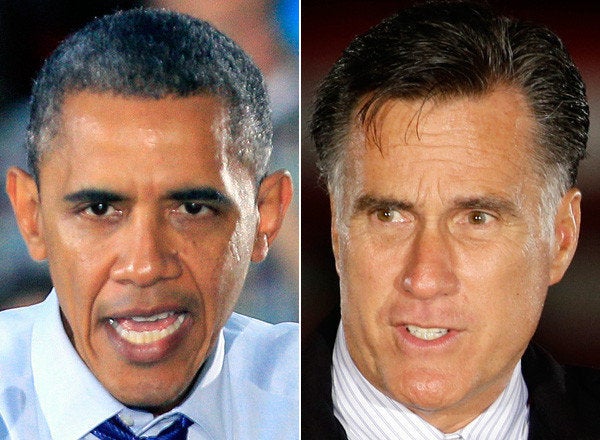
In 2012 as in 2008 and 2010, Rasmussen has been the nation's most prolific polling organization at the state level. Almost every day Rasmussen produces two or three new polls of key battleground states in the presidential election along with their national tracking poll. But in addition to being the nation's most prolific pollster, Rasmussen gets a lot of attention, especially from conservative media outlets and pundits, because its polls consistently produce results more favorable to Republican candidates than the overall averages -- results that frequently don't match the actual election results very well. In 2010, for example, Nate Silver rated Rasmussen as the least accurate and most biased of all polling organizations that conducted a large number of state polls.
So how is Rasmussen doing this year? Along with its national tracking poll that has typically showed Mitt Romney with a lead that is two to three points larger than the overall average, Rasmussen's polls in the battleground states have also had a consistent Republican lean. I compared Rasmussen's latest results in the nine key battleground states -- Ohio, Florida, Virginia, Colorado, New Hampshire, Iowa, Wisconsin, Nevada and North Carolina -- with the overall averages from the HuffPost Pollster -- an average that includes Rasmussen polls. In every case, Rasmussen's poll showed a better result for Romney than the overall average. The Republican lean of Rasmussen's state polls ranged from one point in Nevada and two points in Florida to four points in Wisconsin and five points in Colorado. Across all nine states, Rasmussen's polls favored Mitt Romney by about three points more than the overall average.
Three points of margin is a very significant difference in a close presidential election. If you were basing your perception of the state of the presidential election entirely on Rasmussen's polling, you would now see Mitt Romney as a clear favorite. According to Rasmussen, Romney is now leading Obama in five of the nine key battleground states, tied in three and trailing in only one --Nevada. In contrast, the HuffPost Pollster averages give a very different picture of the state of the presidential race with Obama leading in seven states and Romney leading in only two -- North Carolina and Florida. To be sure, Obama's lead in some of those seven states, such as Virginia and Colorado, is very small. But so is Romney's lead in Florida. It is clear that Rasmussen's polls give a very different impression of the presidential race in the nation and in the battleground states than the overall averages.
In 2012 as in 2010, Rasmussen is producing polls in key states that are significantly more favorable to the Republican candidate than an average of all polls in those states. Perhaps this time Rasmussen will prove to be more accurate than the average. But outliers like Rasmussen usually turn out to be wrong and Rasmussen's track record certainly shouldn't give election watchers much confidence in their results. Maybe that's why Fox News stopped using Rasmussen for their state and national polling this year. Producing polling results that please one side or the other may work for a while, but eventually journalists and voters catch on to the fact that those results don't seem to match the numbers on election night.